Exploring Ocean Rodeo Kiteboard: A Comprehensive Guide
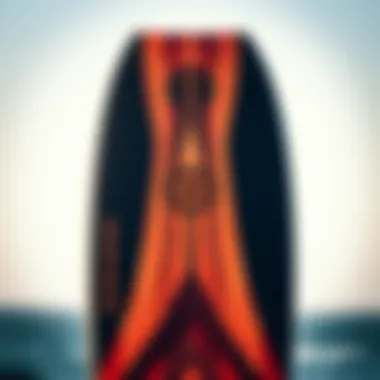
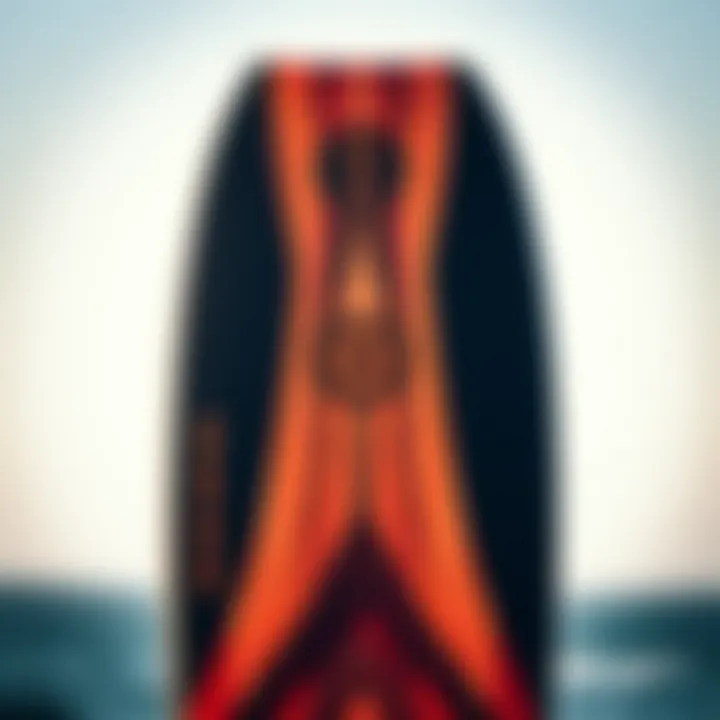
Intro
Kiteboarding has carved out a prominent niche in the world of water sports, and enthusiasts continually search for the right equipment to enhance their experience. Among the myriad of options available, Ocean Rodeo kiteboards have become a popular choice, renowned for their innovative design and superb performance. In this guide, we will explore the essential aspects of these kiteboards, from their fundamental design philosophy to specific riding techniques that can elevate your skills. We aim to give both newcomers and seasoned riders the insights they need to make informed choices and navigate the exciting world of kiteboarding.
Gear Selection
When gearing up for a kiteboarding adventure, the selection of the right gear can make all the difference in performance and enjoyment on the water. Ocean Rodeo kiteboards are designed with versatility and performance in mind, making it crucial for riders to understand the different elements involved in gear selection.
Types of Kites
A variety of kites tailored for specific conditions and riding styles sets the foundation for a successful kiteboarding session. Here are some of the most prominent types:
- All-round Kites: These are versatile options suitable for various conditions, making them a perfect choice for beginners and experienced riders alike. They offer a balance between performance and stability.
- Freestyle Kites: Built for tricks and jumps, freestyle kites allow riders to perform aerial maneuvers with ease. Their design focuses on power and responsiveness, giving you the lift you need.
- Wave Kites: If you’re into wave riding, these kites are specially crafted to handle turbulent conditions. They offer quick turn rates and a more direct feeling of control while riding in the surf.
Understanding the distinctions between these types will help you find a kite that meets your personal riding style and local conditions.
Choosing the Right Board
The board is as significant as the kite when it comes to kiteboarding. Ocean Rodeo offers a range of boards designed for different riding styles and preferences. Selecting the right board can seem overwhelming, but it doesn't have to be. Here are some key considerations:
- Board Size: Larger boards provide added stability and are ideal for beginners or those riding in lighter winds. Conversely, smaller boards offer more maneuverability for advanced riders.
- Board Shape: Consider whether you want a twin-tip board or a directional board. Twin-tips are great for general use and tricks, while directional boards excel in surf conditions.
- Flex and Materials: A board's flex affects performance. Stiffer boards are for speed and responsiveness, while softer boards provide comfort and ease of control. Ocean Rodeo uses high-quality materials ensuring durability and performance in diverse water conditions.
"A well-chosen kiteboard can be your best ally in the water, offering efficiency and enhancing your overall experience."
Skill Development
Mastering the art of kiteboarding requires dedication and practice. Understanding essential techniques and continually developing your skills are vital for enjoying the sport to its fullest.
Essential Techniques
- Control the Kite: Learning how to steer effectively is crucial. Practice flying the kite on land before venturing into water. This develops your understanding of wind direction and kite behavior.
- Body Positioning: Maintaining the right stance while riding directly affects your stability. Lean back a bit, keep your knees bent, and adjust your weight according to the kite’s power.
- Edge Your Board: To gain speed and maintain control, you need to learn edge control. Shifting your weight to the heel edge will help you cut through the water efficiently.
Progression Tips
To continuously improve, consider these strategies:
- Take Lessons: Even if you feel confident, a few lessons with a certified instructor can refine your techniques. They can provide feedback that’s difficult to spot on your own.
- Practice Consistently: Finding time to ride often is key to building muscle memory and confidence.
- Join a Community: Engaging with fellow kiteboarders can provide support, tips, and a sense of camaraderie. Websites like reddit.com offer forums where enthusiasts share advice and experiences.
Investing time into both gear selection and skill development will fundamentally enhance your kiteboarding journey, aligning you with the performance that Ocean Rodeo prides itself on.
Preface to Ocean Rodeo Kiteboarding
Kiteboarding, with its thrilling blend of wind, water, and waves, is a sport that continues to capture the imaginations of enthusiasts worldwide. Among the various brands vying for attention in this dynamic world, Ocean Rodeo stands out for its commitment to quality and performance. This section serves as an introduction to Ocean Rodeo kiteboarding, laying the groundwork for understanding what makes their products unique and highly regarded by both novice and experienced riders alike.
Ocean Rodeo has carved a niche with their innovative approach to kiteboarding gear, particularly their kiteboards. They are not just about providing tools for the sport; they focus on enhancing the overall kiteboarding experience. Understanding the foundation laid by this brand can help riders make informed choices, from selecting the right board to mastering riding techniques.
Throughout this guide, you will discover the significance of choosing gear that aligns not only with performance needs but also with personal riding style and conditions. With multiple models and a wealth of options tailored for different riding styles—from freestyle to wave riding—the brand caters to diverse preferences.
This article will delve into the historical journey of Ocean Rodeo, exploring how the company evolved to become a leader in the kiteboarding industry. A focus on their core philosophy reveals a relentless pursuit of innovation and performance, bridging the gap between cutting-edge technology and rider satisfaction.
To summarize, a solid foundation in understanding Ocean Rodeo kiteboarding is essential for anyone serious about the sport. By appreciating its history and philosophy, riders will be better equipped to navigate their journey in kiteboarding, making informed decisions every step of the way.
The History of Ocean Rodeo
Ocean Rodeo was founded in the late 1990s, just as kiteboarding began to emerge as a mainstream extreme sport. It started with a group of passionate riders who were keen on making a difference in the kiteboarding landscape. They sought to craft products that offered not just functionality but also a strong connection to the water and wind. This fundamental motivation has been a driving force behind the brand’s evolution.
Over the decades, Ocean Rodeo has continually pushed the boundaries of kite technology. They introduced innovative designs and materials that enhanced performance. For instance, their pioneering efforts in developing lighter and more durable materials significantly impacted how riders experience the sport.
The progression hasn't been limited to products alone; the brand developed a community around kiteboarding. They organized events and competitions that not only showcased their gear but also fostered a sense of camaraderie within the kiteboarding community.
Core Philosophy: Innovation and Performance
At the heart of Ocean Rodeo’s ethos lies a profound commitment to innovation and performance. This philosophy is not just a marketing campaign; it's embedded in every aspect of their product development and design. The company constantly strives to enhance the user experience. This mantra leads them to invest in research and development, ensuring that their gear incorporates the latest advancements in technology.
Moreover, performance is a critical aspect of how Ocean Rodeo approaches its kiteboards. Each model is meticulously crafted with specific performance characteristics in mind.
- Adaptability: Ocean Rodeo boards are designed to handle a variety of conditions, from choppy seas to smooth lakes.
- User-Friendliness: The boards often include features that simplify control while maximizing fun, making them accessible to riders of all levels.
- Responsive Handling: Every curve and edge in design contributes to how the board interacts with both water and wind, giving riders agility that enhances their overall kiteboarding experience.
With these facets in mind, it becomes clear that selecting an Ocean Rodeo kiteboard is not just about product choice. It's about aligning with a brand that represents a lifestyle and commitment to continuous improvement in kiteboarding performance.
"Ocean Rodeo isn’t just building boards; they’re crafting experiences that captivate and exhilarate a community of kiteboarders."
This philosophy is what makes Ocean Rodeo a favorite among kiteboarding enthusiasts. The brand stands as a testament to what can be achieved when passion meets innovation, ensuring that the legacy and future of kiteboarding remain vibrant.
Understanding Kiteboard Types
When it comes to selecting the perfect Ocean Rodeo kiteboard, understanding the various types available is paramount. The right board can significantly impact your riding experience, from your skill development to the thrill of mastering new tricks. Different boards cater to distinct riding styles, environments, and conditions. In this section, we will explore three main categories of kiteboards, delving into their unique attributes and how they benefit different kinds of riders.
All-Around Boards
All-around boards are designed to handle a wide range of conditions and styles, making them a top pick for beginners and intermediate kiteboarders. They strike a balance between performance and versatility, making them suitable for various riding conditions. The design emphasizes stability while allowing for easy handling.
One prominent feature of all-around boards is their moderate rocker profile. This slight curve allows for a smooth ride in choppy water and helps maintain control during jumps. An all-around board often features a broader outline, offering better upwind performance, which is essential for those still honing their skills.
- Versatility: Great for different styles such as freeride, freestyle, and light wave.
- Stability: Offers control and comfort in various sea states.
- Ease of Use: Ideal for various skill levels and changing conditions.
Beginners will find these boards especially forgiving, helping them gain confidence as they learn the ropes of kiteboarding. As progress is made, riders can still use all-around boards to explore different styles without needing a complete gear overhaul.
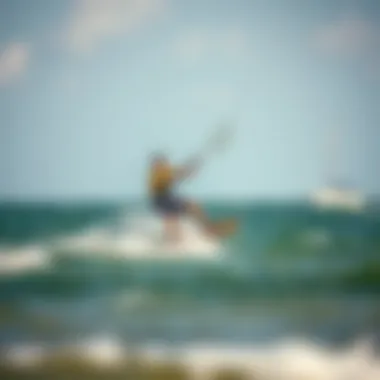
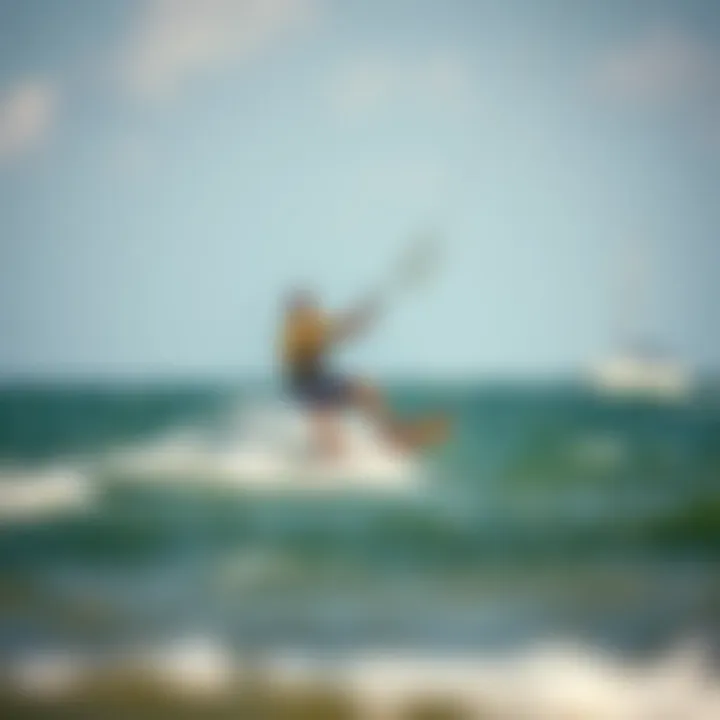
Freestyle and Freeride Boards
Freestyle and freeride boards cater specifically to riders seeking performance in jumps, tricks, and high-speed runs. These boards come with defined features that support aerial techniques and dynamic movements on the water. Freestyle boards tend to be shorter with a more pronounced rocker, which facilitates stronger take-offs and maneuverability. Freeride boards, however, may lean more towards performance and speed, with a flatter bottom that allows for smoother rides over choppy waves.
- Freestyle Boards:
- Freeride Boards:
- Shorter and with a higher rocker.
- Designed for executing tricks and jumps.
- Faster with stability during high speeds.
- Ideal for smooth gliding and upwind performance.
Riders interested in pushing their limits will gravitate towards freestyle options, where creativity knows no bounds. Meanwhile, those preferring a more straightforward yet thrilling ride might choose freeride boards, enjoying the sensation of speed without overly complex maneuvers.
Wave Riding Boards
For enthusiasts of surfing and wave riding, Ocean Rodeo offers specialized wave riding boards. These boards are designed to maximize performance in rolling waves and turbulent conditions, with a focus on responsiveness and control. Wave riding boards often showcase a narrower outline, allowing for quicker turns and agility in the water.
The rocker profile on these boards is quite prominent, enhancing their ability to slice through waves and maintain speed while turning. Furthermore, the addition of thruster fins provides even more control, making sharp turns effortless despite the turbulent surroundings.
- Responsive Design: Excellent for turns and quick reactions to wave patterns.
- Durability: Built to withstand challenging conditions.
- Control: Allows for a more fluid experience in waves.
Riders adventurous enough to tackle waves will find these boards suitable for expressing their skills in a dynamic way. Whether you’re racing down the face of a wave or simply cruising alongside, wave riding boards are designed to make the most out of every swell.
Key Features of Ocean Rodeo Kiteboards
Understanding the key features of Ocean Rodeo kiteboards is essential for any kiteboarding enthusiast looking to maximize their riding experience. These features not only define the performance and usability of the boards but also affect the rider's comfort and ability to perform various tricks. By focusing on aspects such as construction materials, shape, design principles, and fin configurations, riders can make informed decisions tailored to their preferences and riding conditions.
Construction Materials
The construction of Ocean Rodeo kiteboards is a critical aspect influencing their performance. These boards are made using advanced materials like fiberglass, carbon fiber, and high-density foam. Each material plays a distinct role;
- Fiberglass offers durability and flexibility, making the board resilient against impacts.
- Carbon fiber is lighter and stiffer, which translates to better responsiveness and speed on the water.
- High-density foam ensures buoyancy and reduces weight, enabling ease of maneuverability.
When riders consider purchasing a board, the interplay of these materials impacts not only performance but also longevity. A board that employs a clever combination of these elements can withstand the test of time and rigorous riding conditions, which is precisely what enthusiasts look for.
Shape and Design Principles
The shape of a kiteboard is designed with deliberate principles to enhance performance in various riding styles. Ocean Rodeo boards often exhibit a rocker profile, which affects how the board glides and handles different conditions. The rocker is usually about how curved the bottom of the board is:
- Low Rocker: Ideal for speed-focused riding as it allows for a faster glide over flat water.
- High Rocker: Suitable for wave riding, enabling better turns and easier navigation through choppy waters.
Another design element worth noting is the board's width. Wider boards provide greater stability, which is crucial for beginners or riders who focus on strapless freestyle. Conversely, narrower boards allow for sharper turns and higher speeds, appealing to more advanced users. Understanding these shapes helps riders select a board that aligns with their riding style and environmental conditions.
Fin Configurations and Performance
Fins are often overlooked but are a key player in a board’s performance. Ocean Rodeo provides various fin configurations that deliver different levels of grip and maneuverability. Here are some common setups:
- Single Fin: Enhances straight-line speed and stability, great for cruising in flat conditions.
- Thruster Setups: Offer a balance of speed and control, making them versatile for both flat water and choppy conditions.
- Quad Fin: Ideal for maximizing grip while turning, perfect for aggressive riding styles and wave conditions.
Each fin configuration can transform how a rider interacts with the water. For instance, a quad fin setup allows for more dynamic maneuvering in waves, while a single fin might more suit a rider who likes to take it easy on calmer days. It's vital for riders to consider their preferred riding style and the typical conditions they encounter when choosing their fin setup.
"Choosing the right features in an Ocean Rodeo kiteboard can elevate your riding from basic to extraordinary. It's all about selecting what fits you best!"
In summary, the key features of Ocean Rodeo kiteboards—ranging from construction materials to design principles and fin configurations—are crucial in shaping the riding experience. By understanding these elements, kiteboarding enthusiasts can confidently choose a model that matches their skill level and riding goals.
Selecting the Right Ocean Rodeo Kiteboard
Choosing the right kiteboard from Ocean Rodeo is more than just about picking a board off the shelf. It’s about understanding how your specific needs align with the various options available. Each rider, whether they’re just starting or have a few seasons under their belt, has unique preferences and requirements. Getting this choice right can greatly impact your performance and enjoyment out on the water.
Key Elements to Consider
When selecting your kiteboard, a few key aspects need to be considered:
- Rider Skill Level
Understanding your skill level is crucial. Are you a novice still trying to get comfortable with basics or a seasoned pro landing tricky maneuvers? Each board serves a specific purpose, and knowing where you stand helps in narrowing down your choices. - Riding Style Preferences
Do you fancy freestyle, wave riding, or maybe just cruising along with the wind? Each riding style comes with its own set of requirements for board shape and size. This preference directly influences which board will maximize your control and fun on the water. - Environmental Considerations
The conditions where you ride also dictate which board will be best suited for you. Factors like wave size, wind strength, and water type (flat or choppy) all play a role. Boards perform differently in various environments; for example, a wave-riding board is tailored for dynamic conditions.
"Selecting the right kiteboard is a blend of personal preference and understanding the conditions you'll face. There’s no one-size-fits-all here."
Thus, textile choices, width, and fin setups can vary significantly depending on the factors mentioned above. Each detail counts, making it essential to do your homework before committing to a purchase. Don’t skimp on this step—your kiteboarding journey will be smooth sailing if you set it right.
Assessing Rider Skill Level
Understanding your skill level is paramount when it comes to kiteboarding. Newer riders typically benefit from a more forgiving board design that offers stability and ease of use. For instance, larger boards with a wider outline can help you maintain balance as you learn to navigate the waters.
In contrast, advanced riders might be looking for something that allows for speed and agility—smaller, more precise boards can help them pull off tricks with greater ease. As you evaluate your skill level, consider the following:
- Reflect on Past Experiences: Do you find yourself struggling with certain maneuvers or excelling in others?
- Seek Feedback: It can be beneficial to chat with instructors or other experienced riders to get an honest opinion about where you stand.
- Try Before You Buy: If possible, demo different boards to see how they feel beneath your feet.
Getting honest feedback on your skill level helps you to make a more informed decision regarding the right board for your journey.
Identifying Riding Style Preferences
Riding style is not just a preference; it’s a defining trait of your kiteboarding identity. Each style warrants its unique board specifications. Here’s a quick breakdown of how different riding styles affect board choice:
- Freestyle: Riders focusing on jumps and tricks typically prefer a board that’s light and has a sharper outline for faster responses. Look for features like wider tips for pop.
- Wave Riding: Choosing a board that offers excellent carving capability while still holding ground against the waves is key. A narrower tail can provide the required control.
- Freeride: This style often demands a versatile board that can tackle all kinds of conditions. Boards that are neither too aggressive nor too mellow usually fit this need well.
Knowing your riding style can significantly streamline your selection process since it narrows down the board options tailored for your unique experience on the water.
Environmental Considerations for Board Selection
The environment in which you kiteboard plays a pivotal role in your choice of board. Look closely at these factors:
- Wind Strength: In high-wind areas, a smaller board can be more manageable. Conversely, if you’re in lighter winds, choose a board that is large enough to keep you moving.
- Water Condition: Flat water versus waves requires different considerations. If you’re mainly in choppy waters, boards with more rocker help absorb shock.
- Temperature and Terrain: If you’re riding in colder conditions, materials that withstand lower temperatures may be essential. Likewise, for rocky beaches, having a durable board is crucial.
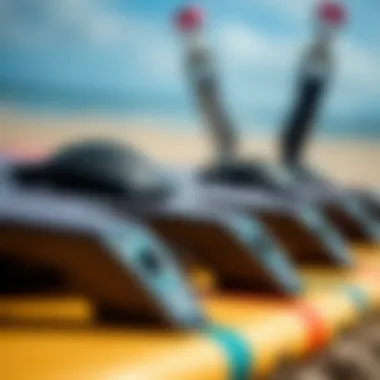
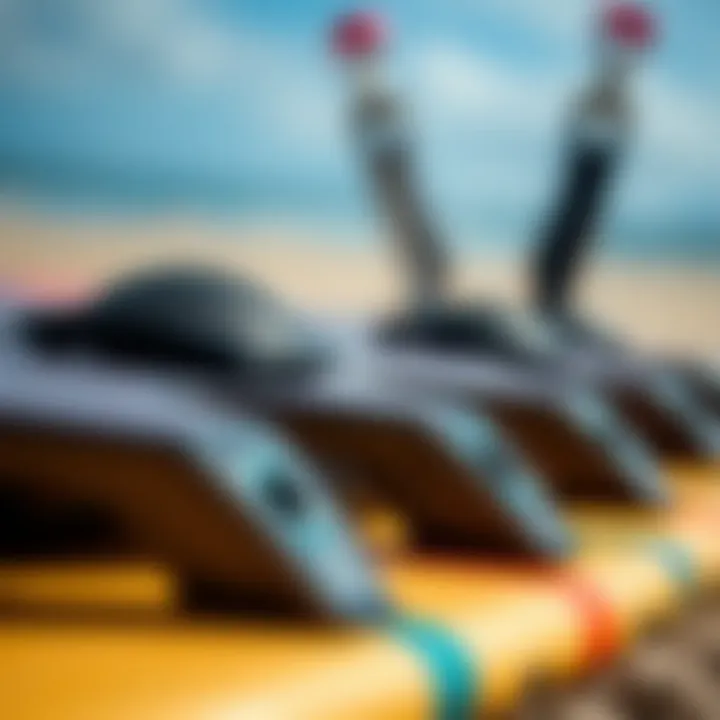
Each of these environmental aspects hinges on your board's performance, making it a significant factor in the decision-making process. When considering where you’ll ride most often, aim for a board that can handle whatever nature throws your way.
Riding Techniques with Ocean Rodeo Kiteboards
Riding techniques are crucial in maximizing the potential of Ocean Rodeo kiteboards. As the saying goes, it’s not just about having the right gear; it’s about how you use it. When it comes to kiteboarding, mastering techniques not only improves performance but also enhances safety, making for a more enjoyable experience on the water. A well, honed skill set allows riders to adapt to various conditions and challenges, unlocking the full capabilities of their equipment.
Mastering the Basics of Kiteboarding
When starting out in kiteboarding, fundamentals can’t be overlooked. Grasping the basic riding techniques sets the foundation for everything that follows. These fundamentals include understanding how to control the kite, body positioning, and balance on the board.
- Kite Control: The kite’s position in the wind window determines how it generates power. Learning how to steer the kite effectively is crucial for maintaining speed and direction.
- Body Positioning: A stable stance ensures better balance. Riders should keep their knees slightly bent and their weight centered over the board. This position helps to absorb the impact of waves and maintains control during maneuvers.
- Edge Control: Utilizing the edges of the board assists in carving turns and maintaining speed. It’s essential to learn how to shift weight from edge to edge seamlessly.
By practicing these basics consistently, riders can progress to more advanced techniques with confidence and skill.
Advanced Maneuvers and Tricks
Once the basics have been mastered, the path opens up to more sophisticated maneuvers that can add flair to your riding style. Skilled riders often incorporate tricks that demonstrate both proficiency and creativity on the water.
Some techniques to consider include:
- Jumping: A staple in kiteboarding, executing controlled jumps involves timing your takeoff with the kite’s pull while keeping your body compact for the best lift. Finding that sweet spot between power and timing can lead to spectacular air time.
- Spin Tricks: Spins add visual excitement and require an understanding of balance and kite control. Simple tricks like a 360 can evolve into more complex rotations with practice.
- Unhooked Tricks: This advanced technique involves disconnecting from the harness, requiring a completely different approach to balance and kite control. Riders should ensure they have solid foundational skills before attempting unhooked tricks, as it can be riskier.
"Practicing advanced tricks regularly on smooth water can help integrate new movements more effectively."
As with any sport, patience is essential. Mastering advanced maneuvers takes time and often includes falls and failures. It’s vital to keep a cool head and remain motivated through the learning process.
To further enhance riding techniques, engaging with local kiteboarding communities can provide valuable insights and tips from seasoned riders. Online forums like Reddit are also fantastic resources for sharing experiences and learning new tricks.
In summary, understanding and refining riding techniques on Ocean Rodeo kiteboards not only improves individual skill but greatly impacts the overall kiteboarding experience. Being versatile and adaptive in your riding approach leads to a more fulfilling adventure on the water.
Caring for Your Ocean Rodeo Kiteboard
Taking care of your Ocean Rodeo kiteboard is crucial if you want to extend its lifespan and enhance your overall riding experience. These boards are designed for performance, but like any piece of sporting equipment, they require attention and maintenance to keep them in prime condition. Neglecting this aspect can lead to diminished performance, safety risks, and ultimately, costly repairs or replacements. In this section, we’ll take a closer look at two foundational elements: regular maintenance practices and effective storage solutions.
Regular Maintenance Practices
Keeping your kiteboard in top shape doesn’t entail extensive work, but it does require consistency. Here’s a breakdown of essential practices that kiteboarders should routinely integrate into their schedules:
- Cleaning: After every session, it’s wise to rinse your board with fresh water, especially if you’ve been riding in saltwater. Salt can corrode materials over time and affect the board’s integrity. Use a soft cloth to wipe off any dirt or sand.
- Inspecting for Damage: Regularly check your board for any signs of wear and tear. Look for dents, scratches or delamination. Addressing these issues early on can prevent bigger problems later. A little time spent here can save you more in the long run.
- Fins and Straps: Make sure your fins are securely attached and not damaged. Periodically check the straps for fraying or cracking. Replacing them at the first sign of wear can ensure that your ride remains safe and enjoyable.
By following these basic maintenance practices, you can ensure that your board keeps performing like a champion.
Storage Solutions
When it comes to storage, how you keep your Ocean Rodeo kiteboard can make a massive difference in its longevity. Here are some straightforward tips:
- Dry Storage: Always store your kiteboard in a dry environment. Moisture can lead to mold growth and damage. If possible, keep it indoors and away from direct sunlight, which can cause fading and weaken materials over time.
- Use a Bag: Investing in a good quality board bag is key. This protects the board from physical damage and also helps to regulate temperature and moisture levels.
- Avoid Pressure: When storing, try not to put heavy items on top of the board. Excessive pressure can result in warping or other structural issues.
The right storage solutions can play a significant role in maintaining your board’s performance over the years.
In short, regular maintenance and clever storage practices can make all the difference in prolonging the life of your Ocean Rodeo kiteboard. Pay attention, and it will pay you back with memorable rides.
With routine care, your kiteboard can become a reliable companion out on the water, reducing replacements and enhancing your overall kiteboarding adventure.
Safety Protocols for Kiteboarding
Safety protocols in kiteboarding are not just recommendations; they are essential guidelines designed to protect riders from harm in a sport that interacts closely with wind and water. The unpredictable nature of both elements necessitates that every kiteboarder, regardless of skill level, adheres to these protocols. Adopting a safety-first mindset helps minimize risks and ensures enjoyable, worry-free sessions on the water.
Understanding Wind Conditions
Wind is the lifeblood of kiteboarding—it's what gives lift, speed, and the ultimate thrill. However, understanding wind conditions is an art and science that requires attention.
Firstly, evaluating wind speed is crucial before launching your kite. Ideal conditions often range from 10 to 20 knots for most kiteboarders; anything outside this range can lead to perilous situations. Here are some critical factors to consider:
- Direction: Knowing the wind direction helps determine your launch and landing area. It's typically safest to launch downwind.
- Gusts: Sudden gusts can catch an inexperienced rider off guard. Familiarizing yourself with local weather patterns can often be the difference between a successful session and a dangerous one.
- Local Knowledge: Seek out areas where kiteboarding is popular; experienced riders often have insights into wind behavior for specific spots.
"A well-prepared kiteboarder is a safe kiteboarder. Always double-check the wind before heading out."
Using tools like wind meters or apps can provide real-time data, making it easier for riders to monitor safety conditions. A keen eye on the weather channel or local bulletins can further arm you with the knowledge crucial for an enjoyable experience.
Essential Safety Equipment
Having the right gear is a fundamental aspect of safe kiteboarding. It’s not just about performance; it’s about ensuring you have the necessary tools to handle potential mishaps. Below are the essential items every kiteboarder should utilize:
- Helmet: Protects against potential head injuries from falls or collisions.
- Impact Vest: In addition to floating capabilities, an impact vest offers cushioning during hard landings.
- Safety Leash: Attaching your kite to a safety leash is wise. If you lose control, this technology ensures the kite remains tethered to you, reducing the chance of it becoming a runaway hazard.
- Harness: A good-quality harness not only enhances comfort but also plays a key role in controlling your kite.
- Knife: Easy access to a knife can be a lifesaver. If a line were to tangle or cause a dangerous situation, having a knife might allow you to free yourself.
Moreover, it’s crucial to have a plan in place for emergencies. Regular drills on how to react in various malfunctions or sudden changes in conditions will prepare you for when the real thing happens.
In summary, kiteboarding safety encompasses knowing the wind and ensuring you are properly equipped. These practices not only protect you but also enhance the overall joy and excitement of the sport.
Popular Ocean Rodeo Kiteboarding Destinations
The world of kiteboarding is as diverse as the locations where enthusiasts practice the sport. Each destination offers unique features, from wind conditions to cultural experiences, which can significantly enhance the kiteboarding experience. Whether one is a novice just dipping their toes into the water or a seasoned professional seeking to push their limits, knowing the right spots is crucial. The choice of destination impacts not only skill development but also safety, enjoyment, and community engagement. Travelers can find camaraderie among fellow kiteboarders, share experiences, and learn from one another in various settings.
Top Locations for Beginners
For those just starting their kiteboarding journey, selecting beginner-friendly spots is essential. Such locations typically have steady winds, shallow waters, and ample space to learn without the pressure of more experienced riders. Here are some popular destinations that offer the perfect environment for novices:
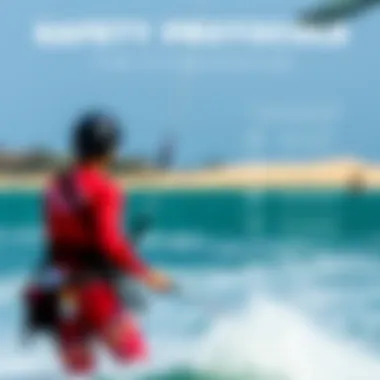
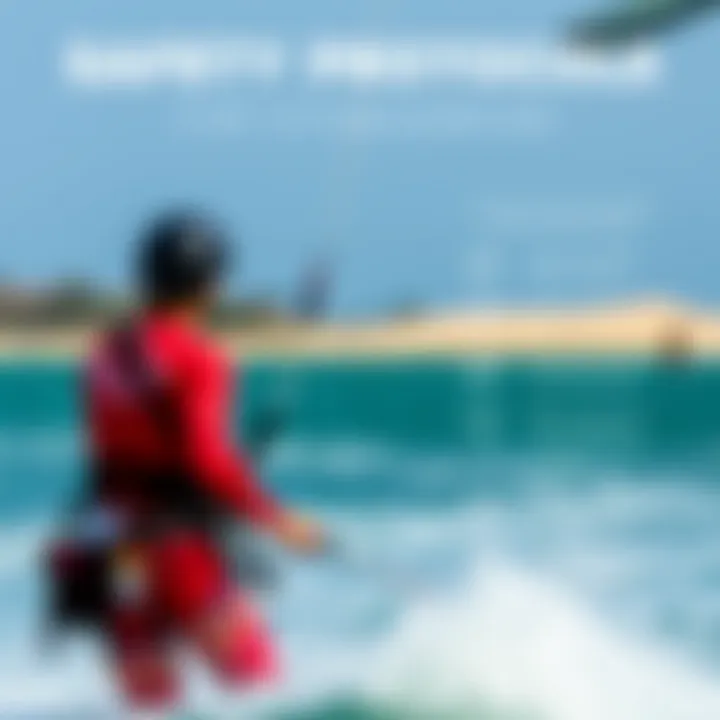
- The Gorge, Oregon: Renowned for its consistent winds, the Columbia River Gorge serves as a mecca for beginners. The wide expanse of water offers plenty of room to practice without fear of colliding with obstacles.
- Cocoa Beach, Florida: Known for its warm waters and friendly atmosphere, Cocoa Beach is perfect for first-timers. Numerous schools provide lessons and rental gear, making it easy to get started.
- La Ventana, Mexico: This laid-back beach town features reliable winds and a welcoming community. It's a great place for beginners who want to learn in a relaxed environment with like-minded people.
These locations not only focus on the basics of kiteboarding but also offer safety measures and supportive instructors. Each site has unique attributes that allow newcomers to learn comfortably and build confidence in a sport that can be incredibly exhilarating.
Challenging Spots for Experienced Riders
For those who have mastered the basics and are hungry for a thrilling experience, there are kiteboarding spots around the world that present challenges. These locations are typically famous for their wind conditions, wave size, and features that can push even the best riders to their limits. Some notable spots include:
- Hatteras, North Carolina: Ideal for experienced kiters searching for a mix of flat water and challenging waves. The Outer Banks are famous for their strong winds and varied conditions, perfect for testing skills.
- Tarifa, Spain: Known as the wind capital of Europe, Tarifa's powerful winds create ideal conditions for advanced maneuvers and tricks. The blend of flat water and waves makes it a favorite among seasoned riders.
- Maui, Hawaii: With its breathtaking landscapes and consistent trade winds, Maui offers a premier kiteboarding environment. The conditions here can be demanding, making it suitable for those ready to push the boundaries.
Navigating these more advanced spots requires a level of skill that goes beyond the basics; riders must be aware of local conditions, potential hazards, and the ability to adapt to changing environments. These areas can provide an unforgettable experience that enhances skills while demanding respect from the sport's challenges.
"Kiteboarding is not just a sport; it's a lifestyle that offers adventure and camaraderie. Choosing the right destination significantly impacts the experience and personal growth.”
Community and Events in Kiteboarding
Kiteboarding isn't just a sport; it's a vibrant community that thrives on connection, shared experiences, and collective passion. These connections foster a sense of belonging and camaraderie among participants, enhancing the overall enjoyment of the sport. The symbiotic relationship between local clubs, global competitions, and annual festivals plays a significant role in developing the culture of kiteboarding.
Local clubs often serve as the heart of this community. They provide a space for riders to come together, exchange tips, and share stories. Being part of a club offers a sense of support, especially for beginners who may find the vast seas and winds daunting. Clubs typically organize group outings, surf perpetually changing conditions, and handle logistics that newcomers might find overwhelming on their own.
Through these clubs, riders can participate in valuable learning experiences. Often, clubs have instructors who can offer personal guidance. This mentorship fosters skill development and a deeper understanding of equipment, techniques, and safety, ensuring participants feel comfortable while navigating their waterway.
Local events are equally important. They can range from casual meet-ups to organized competitions. These events are more than just gatherings; they are opportunities to connect with like-minded individuals, expand social networks, and even find potential travel buddies. Additionally, engaging in local events can lead to friendships that transcend the sport itself.
Quote: "Kiteboarding brings people together, creating a bond that goes beyond the water." — An enthusiastic kiteboarder.
Local Clubs and Organizations
Local kiteboarding clubs are essential hubs of activity and growth in the sport. These organizations not only cater to experienced riders but welcome novices with open arms. Membership often comes with benefits such as access to exclusive events, discounted equipment, and training sessions. More than just a collection of people who share a hobby, clubs often advocate for the sport, working to influence local policies on water usage.
Some notable aspects include:
- Workshops and Clinics: Clubs frequently host workshops that cover everything from the fundamentals of kiteboarding to advanced maneuvers. These sessions can be invaluable for novice riders looking to accelerate their learning curve.
- Safety Programs: Many clubs prioritize safety, offering workshops that educate riders on local conditions, equipment checks, and rescue protocols.
- Environmental Initiatives: Clubs often get involved in environmental efforts. These activities promote sustainability, ensuring the pristine conditions that kiteboarders appreciate remain untainted for generations to come.
Global Competitions and Festivals
As kiteboarding continues to evolve, global competitions have become focal points for enthusiasts worldwide. Events like the GKA Kite World Tour or the Red Bull King of the Air attract kiteboarders from various backgrounds and skill levels. These competitions offer a platform for athletes to demonstrate their skills and inspire others within the community.
Participating in or attending these events comes with several perks:
- Spectacular Displays of Skill: Watching pro riders perform at their best is both educational and inspiring. These spectacles can ignite a new level of enthusiasm in aspiring kiteboarders.
- Networking Opportunities: Global events are also a chance for athletes, sponsors, and fans to network. Such interactions can lead to new friendships, sponsorship chances, and collaborations.
- Innovations in Gear: Many brands showcase the latest advancements in kiteboarding equipment during these festivals. Attendees get a first-hand look at new technologies, which can enhance their riding experiences.
It's worth mentioning that these events often include community engagement activities, making them inclusive and accessible. Competitions, workshops, and social gatherings at festivals allow everyone—from curious bystanders to seasoned experts—to participate and share in the excitement.
In essence, the community surrounding kiteboarding and the events that celebrate it are crucial for growth, inclusivity, and the sport's ongoing evolution. From local clubs nurturing new talents to global competitions showcasing elite performances, these elements work in concert to form the backbone of a thriving kiteboarding culture.
Emerging Trends and Innovations in Kiteboarding
Kiteboarding has come a long way since its early days, evolving continuously in response to the demands of riders and advancements in technology. This section dives into the emerging trends and innovations shaping the future of kiteboarding. Understanding these elements is crucial for any rider who wishes to stay ahead of the curve.
Technological Advancements in Gear
In the last decade, kiteboarding gear has undergone significant transformations. Manufacturers are innovating to enhance rider performance, safety, and convenience. By utilizing cutting-edge materials like carbon fiber and lightweight composites, newer models exhibit strength without compromising on weight, allowing for easier handling on the water.
Key technological advancements include:
- Smart Kites: Some brands are developing kites equipped with sensors that can monitor wind speed and direction, providing real-time data to the rider. This tech allows users to adjust their technique or gear choice dynamically.
- Inflatable and Rigid Hybrid Designs: By combining the best features of inflatable kites and rigid boards, manufacturers offer products that cater to different styles, ensuring versatility in various conditions.
- Integrated Safety Systems: New safety features such as automatic depower systems and quick-release mechanisms are now standard in gear, providing peace of mind for users.
Ultimately, adopting these technological advancements can greatly elevate the kiteboarding experience, making it smoother and more thrilling.
Sustainability in Kiteboarding Practices
As awareness of environmental issues rises, sustainability has become a hot topic in the kiteboarding community. Companies are increasingly adopting eco-friendly materials and practices in both gear production and event management. This shift is not just a trend but a necessity for the future.
Some sustainable practices observed include:
- Use of Recycled Materials: Various brands are producing kites and boards from recycled plastics and other sustainable materials, significantly reducing waste.
- Eco-Conscious Manufacturing: Kiteboarding brands are reassessing their production processes to minimize energy consumption and greenhouse gas emissions, seeking certifications such as ISO 14001.
- Community Clean-Up Events: Many organizations are hosting beach clean-ups and environmental awareness campaigns as part of kiteboarding competitions, encouraging riders to actively participate in preserving their riding environments.
"Sustainability in kiteboarding is no longer an option but a responsibility that every enthusiast should embrace."
Taking these sustainability measures not only helps in conserving the environment but also appeals to a growing community of eco-aware riders. As consumers steer towards brands that prioritize the planet, companies responding to these needs will undoubtedly thrive.
End: The Future of Kiteboarding Experiences
As the sun sets on traditional kiteboarding, the horizon is bright with new possibilities that come with evolving experiences. The landscape of kiteboarding is shifting, and Ocean Rodeo is at the forefront of this transformation. With fresh designs and innovative technology tailored to both newcomers and seasoned riders, we can expect kiteboarding to become more accessible and enjoyable for everyone.
Evolving Experiences and Inclusivity
The notion of inclusivity in kiteboarding is gaining traction, with organizations and companies like Ocean Rodeo advocating for broader representation in the sport. Programs designed to introduce diverse groups to kiteboarding can significantly broaden participation. Whether it is through gender-specific events or initiatives aimed at different age groups, the aim is to create spaces where all enthusiasts feel welcome.
- Grassroots Initiatives: Various local clubs have started workshops to teach kids and adults alike, bridging gaps that were once barriers.
- Adaptive Kiteboarding: Innovations in adaptive gear allow individuals with disabilities to partake in kiteboarding. Each year, more adaptive events encourage participation from disabled individuals, creating a community rooted in support.
Inclusivity has its perks; a diverse community brings fresh ideas, techniques, and perspectives, enriching the sport. From a novice learning the ropes to an expert executing tricks, everyone has a place in the evolving world of kiteboarding.
Final Thoughts on Selecting Your Gear
When it comes to selecting your gear, the choices can be as abundant as the waves in the ocean. Understanding your own style and needs is crucial to ensuring an enjoyable experience. Here are some key elements to consider:
- Rider Profile: Your skill level, weight, and riding style all play critical roles in gear selection. Beginners should opt for user-friendly, stable boards that offer great control.
- Local Conditions: Each location offers unique wind and water conditions. Evaluate the specific environment where you plan to kitesurf, as it can influence your choice of kite size and board type.
- Brand Reputation: Research the brands that resonate with your ideals. Ocean Rodeo has developed a solid reputation, but understanding the nuances of what each brand offers can shape your choice significantly.
Ultimately, there's no one-size-fits-all solution in kiteboarding. The perfect setup is the one that matches not just your skills, but your aspirations and the kind of experience you want to have on the water. Remember, as you gear up, you're not just buying equipment but investing in countless adventures and memories to come.
"Kiteboarding isn't just about the ride; it’s about the connection with the wind, the water, and the community around us."
As we look ahead, following these insights, it's clear that the future of kiteboarding experiences is not only dynamic but deeply intertwined with community and accessibility. There’s a world waiting to be explored, one wave at a time.















